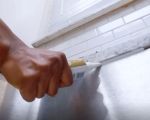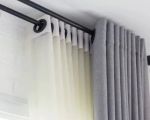How Caulking Windows Can Save Energy and Reduce Costs
As energy costs continue to rise, it has become increasingly important to find effective ways to improve energy efficiency in our homes. One of the most cost-effective and simple methods is caulking windows to prevent air leaks. I’ve personally experienced the difference it can make in maintaining a comfortable indoor temperature, reducing energy bills, and making my home more eco-friendly. In this article, I will share everything I’ve learned about the process of caulking windows and why it’s a great investment for any homeowner.
Understanding the Importance of Proper Window Sealing
Windows are a common source of air leaks in a home, which can lead to drafts and heat loss during the colder months, and excessive heat during the summer. When the seals around your windows start to deteriorate, or if they were poorly installed in the first place, it allows warm or cool air to escape and forces your heating and cooling systems to work harder. This inefficiency results in higher energy consumption, which ultimately affects your energy bills.
By caulking your windows, you can create an airtight seal that prevents drafts and helps maintain the temperature inside your home. This simple and affordable solution can significantly improve energy efficiency without the need for costly replacements or upgrades. And let me tell you, after sealing my windows, I noticed a noticeable difference in the comfort of my home and a decrease in my energy bills. The return on investment is definitely worth it!
The Benefits of Caulking Windows
There are numerous benefits to caulking your windows. Some of the most noticeable include:
- Energy Savings: As mentioned earlier, preventing heat loss or gain through your windows helps reduce the amount of energy your HVAC system uses. This translates into lower utility bills, especially in regions with extreme temperatures.
- Increased Comfort: Caulking helps maintain a consistent indoor temperature, which makes your home more comfortable year-round. No more drafts or cold spots near windows!
- Improved Indoor Air Quality: Proper window sealing can also help reduce the infiltration of outdoor pollutants, such as dust, pollen, and moisture, contributing to a cleaner, healthier indoor environment.
- Protection from Water Damage: Caulk seals around windows help prevent water from seeping into the walls, which could lead to mold or structural damage. This protective layer helps preserve the integrity of your home.
When to Caulk Your Windows
Now that we know the benefits of caulking, it’s important to understand when to do it. In my experience, the best time to caulk your windows is during spring or fall, when the weather is mild. These seasons provide the ideal conditions for caulking because extreme heat or cold can affect the caulk's ability to adhere properly to the surfaces.
If you notice any drafts or gaps in the seals around your windows, it's a good sign that it's time to apply a fresh coat of caulk. Additionally, if your energy bills have risen without any change in your usage, this could be a result of air leaks through your windows.
How to Caulk Your Windows: A Step-by-Step Guide
If you're ready to tackle this DIY project, here's a simple guide I’ve followed to caulk my windows:
- Step 1: Clean the Area: Start by thoroughly cleaning the area around the window frame where you'll be applying the caulk. Use soap and water to remove dirt, dust, and old caulk. Let the area dry completely.
- Step 2: Choose the Right Caulk: For windows, it's best to use a silicone-based or latex-based caulk. Silicone caulk is more durable and waterproof, while latex caulk is easier to work with and clean up. Make sure the caulk is paintable if you plan to paint over it.
- Step 3: Apply the Caulk: Cut the tip of the caulk tube at a 45-degree angle and load it into a caulking gun. Apply the caulk in a continuous bead along the gaps or cracks around the window frame. Be sure to fill all the gaps, but avoid overfilling.
- Step 4: Smooth the Caulk: After applying the caulk, use a damp finger or a caulk-smoothing tool to smooth it out and ensure it’s sealed tightly. This step will also give the caulk a clean, finished look.
- Step 5: Let It Dry: Allow the caulk to dry completely according to the manufacturer's instructions. This usually takes about 24 hours, but it can vary depending on the product used.
Choosing the Best Caulk for Your Windows
Choosing the right caulk for your windows is essential for achieving the best results. I recommend using high-quality silicone caulk for the best performance and durability. Silicone caulk forms a tight seal and is resistant to water, making it ideal for outdoor use. It also has excellent flexibility, which is crucial when dealing with temperature fluctuations.
If you’re unsure about which caulk to buy, check out customer reviews and ratings to find products that have proven to work well for window sealing. Some of the top brands I’ve used include GE Silicone II and DAP Alex Plus—both offer excellent adhesion and long-lasting protection.
Additional Tips for Maximizing Energy Efficiency
While caulking your windows is a fantastic start, there are other simple ways to maximize energy efficiency in your home. Here are a few additional tips I've learned over the years:
- Install weather stripping around doors and windows to further prevent air leaks.
- Use window coverings such as heavy curtains or blinds to help block heat during the summer and retain warmth in the winter.
- Consider installing energy-efficient windows if your current ones are old and inefficient.
- Ensure that your HVAC system is well-maintained and working at optimal efficiency.
By combining these strategies with proper window caulking, you can significantly reduce energy costs and enjoy a more comfortable living space.
In conclusion, caulking your windows is a simple yet effective way to save energy and improve the comfort of your home. If you're looking to take your home's energy efficiency to the next level, this affordable DIY solution is a great place to start. Whether you're sealing your windows for the first time or simply maintaining them, the benefits will be clear in no time.









